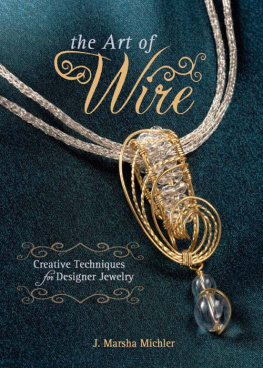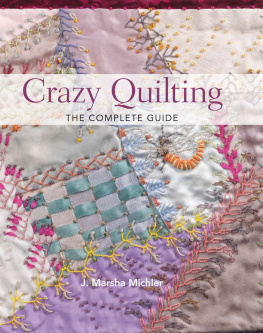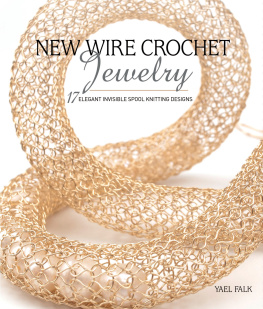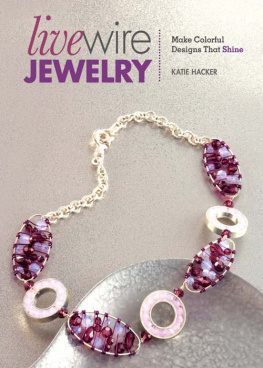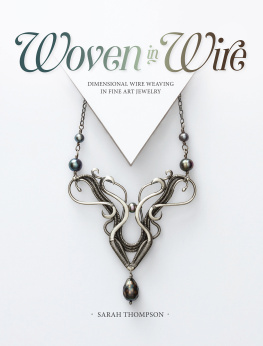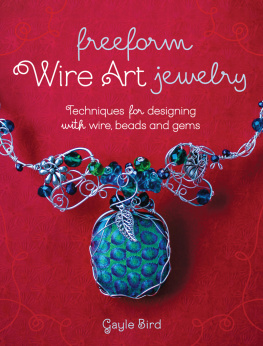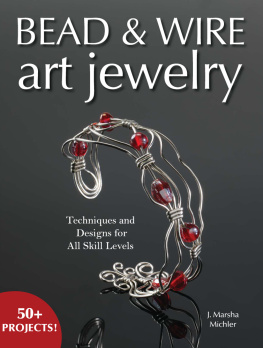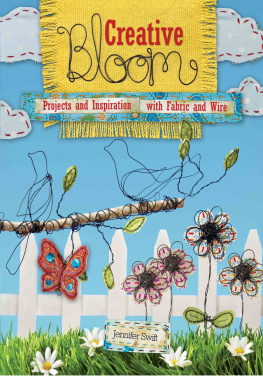J. Marsha Michler
Thank you for purchasing this Martha Pullen eBook.
Sign up for our newsletter and receive special offers, access to free content, and information on the latest new releases and must-have crafting resources! Plus, receive a coupon code to use on your first purchase from Store.MarthaPullen.com for signing up.
or visit us online to sign up at
http://marthapullen.com/ebook-promo
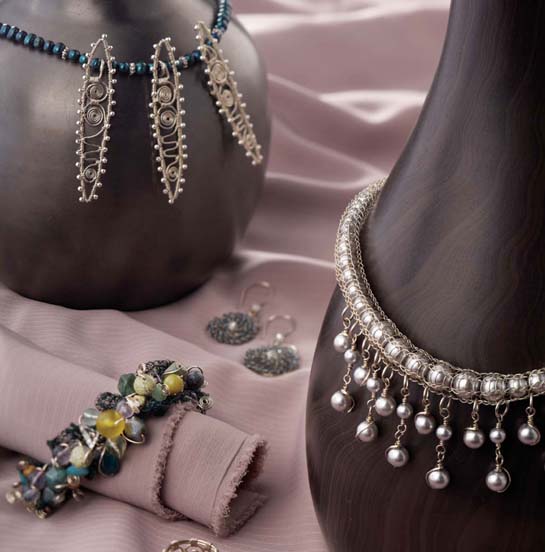
introduction
Wire is rich in possibility and gives you endless opportunities to create artful jewelry. Wire can be shaped in infinite ways, opening up a world of design options ranging from flat forms to sculptural ones. Different techniques yield different results. If filigree techniques are used, finished pieces clearly show their wire roots, but aligning wire in wire wrapping gives wire the look of solid metal, while dowel knitting and crochet make wire look almost like cloth. Try your hand at some or all of the techniques presented in this book. Wrap, hammer, coil, curl, twist, dowel knit and crochet your way through the pages of this book to make your own fabulous jewelry.
Wire working is an art and a craft that anyone with a few simple tools can pursue. Only a simple workshop setup is needed; attractive, wearable pieces are entirely attainable with minimal space and expense. As you dive into making jewelry from wire, begin with for background on the materials, tools and techniques essential to successful wire working. If youre an absolute beginner, learn to make plain and wrapped loops first (see pages 1920), then broaden your horizons with additional techniques.
Once youre ready to start creating, venture into the project chapters. Each chapter features a different way to work with wire. The chapters are in no formal order, although each begins with an easy piece especially designed to teach a skill. Start with the first project in each chapter to learn the featured technique, then try other projects in the chapter that appeal to you. Explore all of the techniques! Chances are that you will find one or more that appeal to you. You can even combine techniques to make original designs.
Creating stunning jewelry using wire is an ageless art and craft. Some of the pieces in this book were inspired by ancient jewelry on display at the Louvre Museum. These early wire-formed pieces were meticulously crafted and impressed me as something to aspire to in my own work. The designs seemed timelessas wearable today as they were in their own day. Ive tried to present designs here that have a similar timeless quality. I hope that in these pages you find inspiring ideas and fun things to try and that youll use the techniques in this book to develop ideas for your own original jewelry designs.
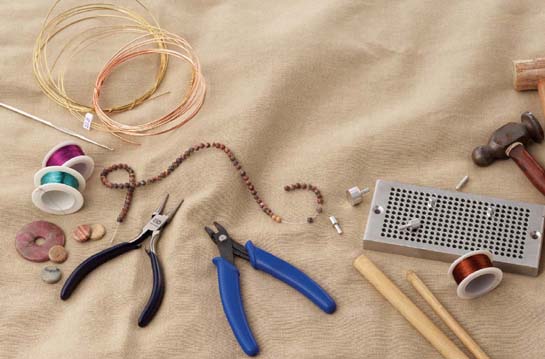
CHAPTER ONE
getting started
I n this chapter you will learn all that you need to know before you begin creating the projects in the following chapters. In these pages youll find information regarding jewelry making materials, tools and workspaces, as well as wire working techniques. Before the technique lessons well also discuss safety, which is enormously important. Please take a moment to read this section on page 15.
Before you start making jewelry, youll need to have tools and supplies. There are almost endless choices in both of these areas, and picking materials and tools can be daunting if youre not armed with information. Well first discuss the many aspects of wire, which is used in every project throughout this book. Well also cover materials like beads and findings. After that well discuss tools, including which ones you must have on hand and which ones you might find useful, but not necessary. Finally, before we dive into techniques, well look at setting up a workspace for yourself. Setting up a workspace makes creating an easy thing to do. The more serious you get about making wire jewelry, the more important your materials, tools and workspace become.
Once youre ready to begin working Ill show you wire working techniques. Some, like cutting wire and finishing wire ends, will be important to all projects. Spend time practicing these frequently used techniques and you will be on your way to becoming a master of your craft. This section also includes step-by-step instructions for basic wire shaping and shows you how to create your own findings. Although findings may be purchased, you also have the option of creating your own. Have fun and experiment with designing your own findingsmake them a part of a finished piece, not just an add-on.
Once youve been through this chapter, youll be ready to make your own wire jewelry.
materials
The items you use to create your jewelry pieces can be as simple or as splendid as you desire. Supplies are available in a wide range of materials, colors, sizes and price ranges. The information over the following pages will help you to pick the right pieces for your projects.

Wire
Wire is used in all of the projects in this book to create both the structure of the jewelry pieces and the decorative elements. Base metal wires are sold by length or weight, and gold and silver are priced based on the market price for the metal used to make the wire, plus a markup added by a seller. There are many different factors to consider when choosing wire for your project, including metal, gauge, shape and hardness.
Metal
The metals used to create wire can be divided into two categories: base metals and precious metals. Base metals include brass, copper and nickel silver. I recommend using base metals when you are practicing a technique and when you are working a new design for the first time. These inexpensive wires can be scrapped if a project doesnt work out. Any of the base metal wires can be used to make finished jewelry. Precious metals include silver and gold. Because of their higher value, use gold or silver wire for fine, finished pieces. Both gold and silver wire are sold by weight, and the price can change daily, depending on the market.
Brass
Brass is an alloy consisting of copper and zinc. Different types of brass are made by varying the proportions of copper to zinc; an alloy with 15 percent zinc is often used for jewelry making. This alloy goes by several names including rich low brass and Merlins gold. Jewelers bronze is another name often used; this alloy has a color similar to 14k gold. Brass tarnishes, but more slowly than pure copper. Yellow brass, consisting of 30 percent zinc, may also be used for jewelry. This alloy is more yellow in color than rich low brass.
Copper
Most copper wire used for jewelry making is pure, or 99.9 percent pure. A softer metal than brass, it is very malleable and easy to shape, file and saw. When filed or sanded, copper appears pinkish but soon tarnishes to a deeper reddish or brownish hue. Outdoors, exposed to the elements, copper naturally weathers through shades of russet brown and gradually to green and finally to a light green you may sometimes see on antique roofs or weather vanes. Bronze and brass, because they contain copper, will also form this patina. These color changes cannot be expected to naturally occur on jewelry, however. Patinating copper jewelry requires application of chemicals, and sometimes the heat of a torch.

